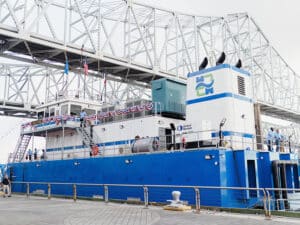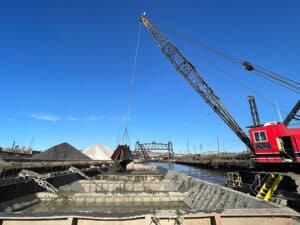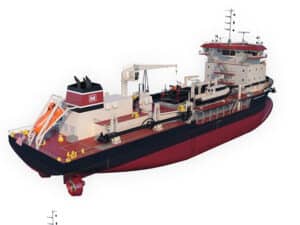
Boskalis orders a methanol-ready megahopper
Written by Nick Blenkey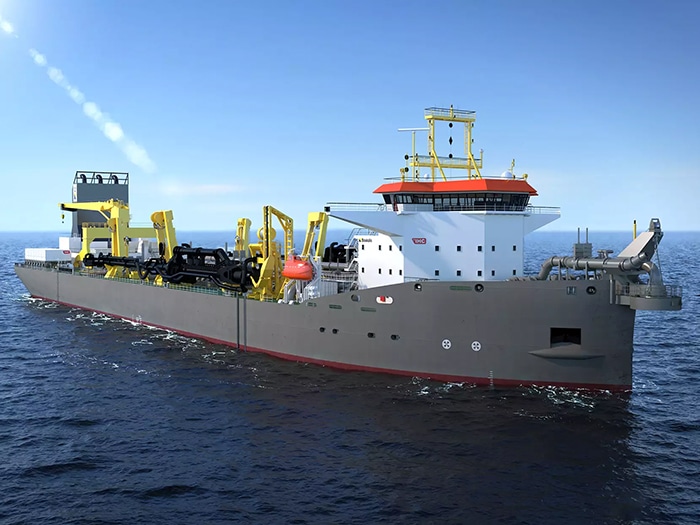
Image: Boskalis
Two leading Dutch players are again pushing dredge technology forward. Following an extensive design phase that began in 2020, Boskalis has signed a contract with Royal IHC for a giant methanol-ready trailing suction trailing suction hopper dredge (TSHD). With a hopper volume of 31,000 cubic meters (40,546 cubic yards), it’s being described by Boskalis as a megahopper.
To be built at Royal IHC’s Krimpen aan den IJssel shipyard in the Netherlands, the vessel’s energy-efficient design will feature Azipod propulsion combined with an optimized underwater hull design and an advanced automation system.
The diesel-electric vessel will be prepared for the use of green methanol and the dual fuel main engines will be equipped with two-stage turbochargers.
With a double suction pipe equipped with underwater pumps and two discharge pumps with a combined discharge capacity of 15,000 kW, the new trailing suction hopper dredge will be well suited for dredging material and discharging it over long distances to a reclamation site. This powerful performance also contributes to increased efficiency of the dredging process.
The new vessel is expected to enter service in mid-2026.
“We are delighted to have reached the final award after a careful process, thus perpetuating the close relationship between Boskalis and Royal IHC,” said Theo Baartmans, a member of the Boskalis board of management. “Moreover, thanks to the innovative design and craftsmanship of Royal IHC and its partners, by building this megahopper we are taking an important step forward in future-proofing our fleet.”
HOW A TSHD OPERATES
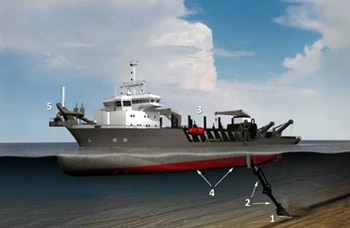
Whether a megahopper or somewhat smaller, a trailing suction hopper dredge (TSHD) is a vessel used to extract and transport sand or sediment by dragging a trailing head attached to a long suction pipe (2) with water jets (1) while traveling over the seabed, as a result of which the material to be dredged is loosened in front of the suction head. Large centrifugal pumps transport the dredged material to the hopper (3) from where it is later deposited (through bottom doors) (4) or discharged (through a pipeline or sprayed – rainbowed – across the bow) (5) to a reclamation area. Applications include the deepening and maintenance of ports and waterways and protecting coastlines from erosion and the effects of climate change.

